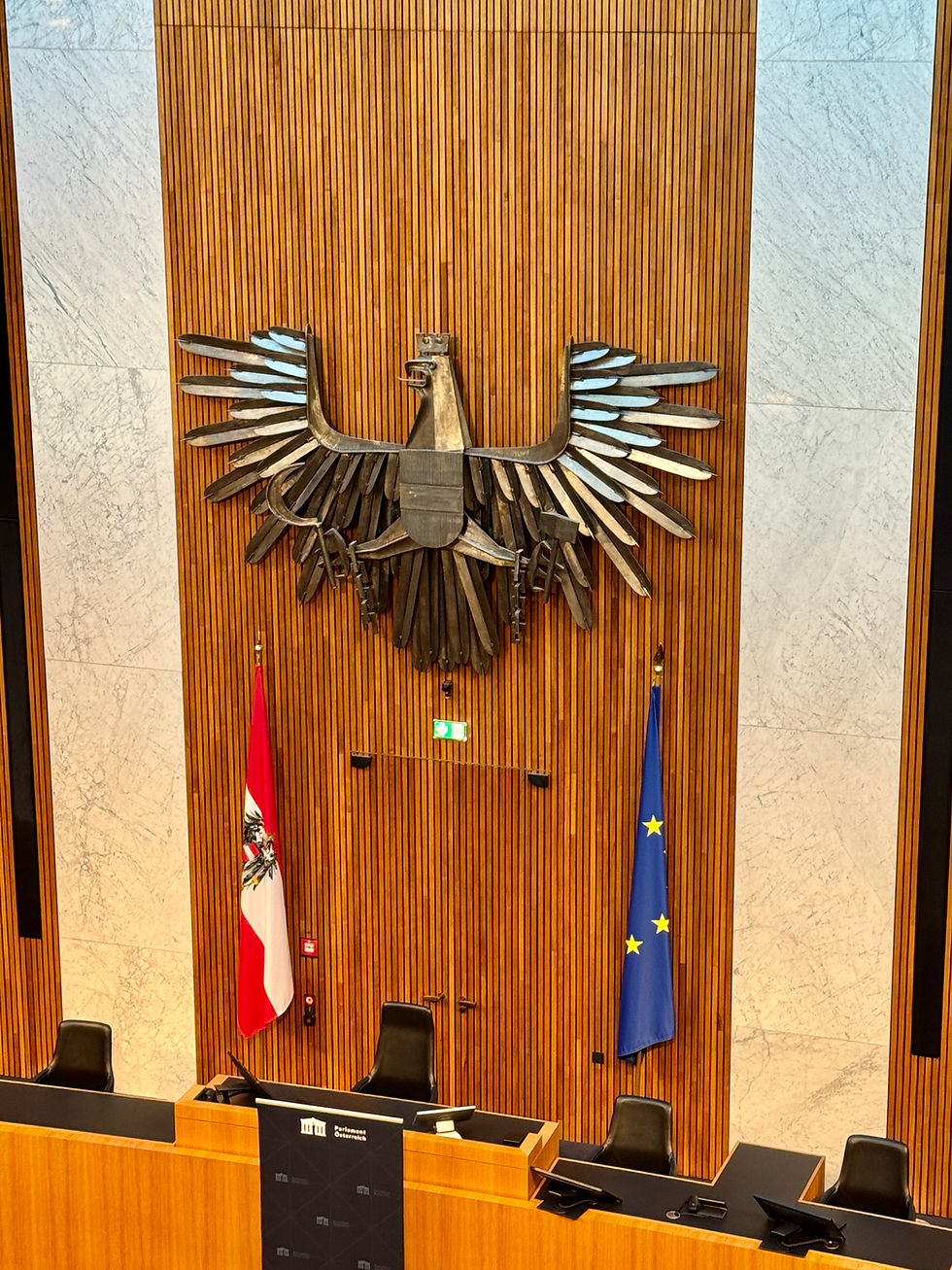Österreichische Nationalbibliothek Esperantomuseum - a Sweet Curiosity in the National Library
- Mika Vepsalainen
- Mar 25, 2023
- 3 min read
Join us for a visit to one of the sweet secrets of the Viennese museum scene, the Esperanto Museum, Internacia Esperanto-Muzeo en Vieno.

Almost opposite of the famous Café Central in the heart of Vienna, there is a fascinating world of languages, the Esperanto Museum, one of the several curious tiny museums of the Austrian National Library, highlighting one of the biggest political problems of all times: the fact that we do not understand each other.
Esperanto estas artefarita lingvo, kiun pola okulisto D-ro Ludwig Lazar Zamenhof (1859-1917) elpensis fine de la 19-aj centoj kiel respondo. En lia sonĝo ĝi fariĝus la universala lingvo, kiu alportus mondan pacon kaj unuigus nin ĉiujn. Ekde tiam, la pli ol cent jaroj da historio de Esperanto daŭras ekde la publikigo de la unua lernolibro kaj ĝia rapida disvastiĝo antaŭ la unua mondmilito ĝis ĝia subpremado dum la tempo de nacisocialismo kaj, finfine, la unua internacia komunikilo, ĝi akiris atenton kaj sekvantojn tra la tuta mondo. Eminentaj figuroj kaj personecoj tra la historio estas konataj paroli Esperanton, inkluzive de du Papoj, Johano Paŭlo la 2-a kaj Benedikto la 16-a, George Soros, Josip Broz Tito, J.R.R. Tolkien, Jules Verne kaj mi, nur por nomi kelkajn.
Esperanto is an artificial language that a Polish ophtalmologist Dr. Ludwig Lazar Zamenhof (1859-1917) invented in late 19th hundreds as a response. In his dream it would become the universal language that would bring world peace and unite us all. Since then, the over a hundred years of history of Esperanto span from the publication of the first textbook and its rapid spread before the First World War to its suppression during the time of National Socialism. Although it may not have become the number one international means of communication, it has gained attention and followers all over the world. Prominent figures and personalities throughout history have been known to speak Esperanto, including two Popes, John Paul II and Benedict XVI, Geroge Soros, Josip Broz Tito, J.R.R. Tolkien, Jules Verne and me, just to name a few.
Zamenhof's brother Felix got the for the idea of a museum during the 19th Esperanto World Congress in Gdansk in 1927. Another participant, Hugo Steiner took up the idea and founded the "International Esperanto Museum" in the same year. Gestapo closed it in March 1938 but the museum managed to reopen in 1947. In 2005, the museum and the Department of Planned Languages found a new home in the 17th century Baroque Palais Mollard known for Emperor Joseph II's famous Round Tables. Part of the national library today, the Palace also houses the Globe Museum and the Department of Music.
Vieno estis granda centro de la Esperanto-movado en la intermilita periodo: pli ol 70 Esperanto-lingvaj kursoj estis dokumentitaj nur en 1922. Radio Vieno kaj multaj revuoj organizis kursojn. Specifaj kursoj eĉ estis ofertitaj al la polico! En 1924 kaj 1936 okazis en Vieno la Universalaj Kongresoj de Esperanto, kaj en majo 1934 en la parlamento estis organizita la konferenco "Esperanto en Lernejo kaj Praktiko". Famaj politikistoj kiel Ignaz Seipel kaj Johann Schober subtenis la muzeon.
Vienna was a centre of the Esperanto movement in the interwar period: more than 70 Esperanto language courses were documented for the year 1922 alone, there were Esperanto courses on Radio Vienna, in numerous magazines and also for the police. The Esperanto World Congress took place in Vienna in 1924 and 1936. The Austrian Parliament hosted a conference on "Esperanto in School and Practice" in 1934. Renowned politicians such as Ignaz Seipel and Johann Schober supported the foundation of the museum.
Today, the museum is among the world’s oldest language museums. It collects and presents media and objects on Esperanto, interlinguistics and planned languages and has a collection of over 35,000 library volumes, 40,000 pamphlets, 23,000 photographs, 2,000 hand-written manuscripts and thousands of other documents. Interactive media stations, publications, objects, posters and archives tell Esperanto's story from the publication of the Unua Libro 1887 to literary production and the current Esperanto World Congresses. The library for interlinguistics documents around 500 planned languages, including newer ones such as Klingon from Start Trek and Dothraki known by those who who have seen Game of Thones!
In addition to translations of famous books, there is also a funnier collection of Esperanto objects with maps written in Esperanto, soft drink bottles, cigarettes, toothpaste and many more.
There is no museum shop, unfortunately. There is no museum café either but why don't you check Café Central almost opposite of the museum after your visit - it is definitely one of the fanciest restaurants in Vienna, both in terms of the interior and the menu, not to mention their cakes!
Located in the ground floor of the building with no steps, the museum is fully accessible. There is an excellent accessible loo and lockers behind the ticket counter.
Österreichische Nationalbibliothek Esperantomuseum
Palais Mollard-Clary, Herrengasse 9, 1010 Vienna
https://www.onb.ac.at/en/museums/esperanto-museum




































































Comments